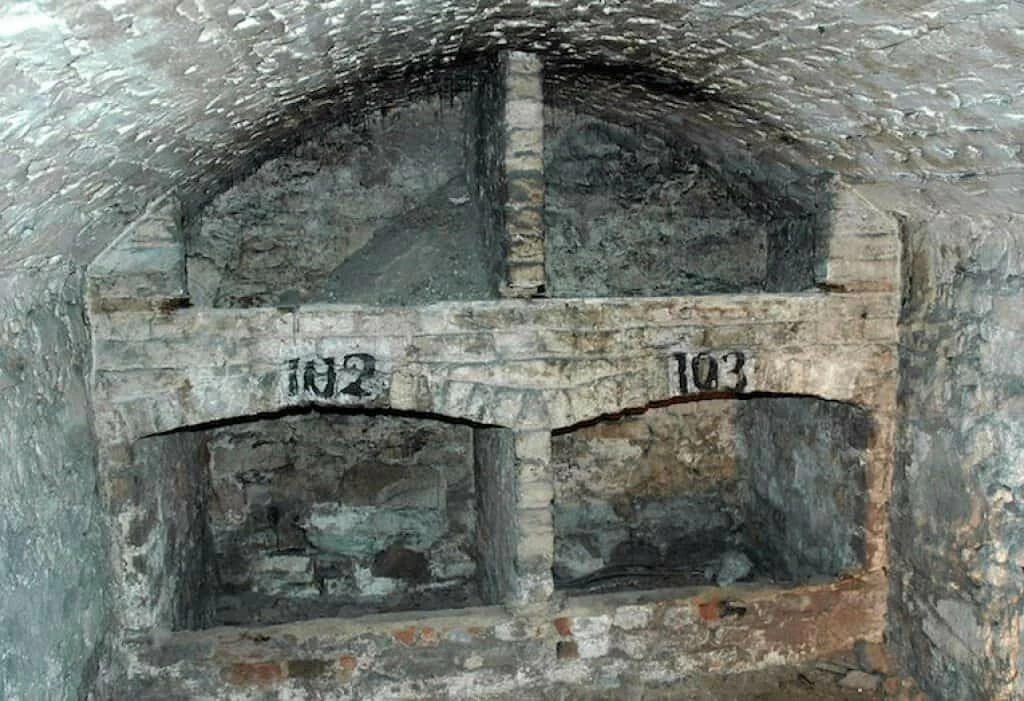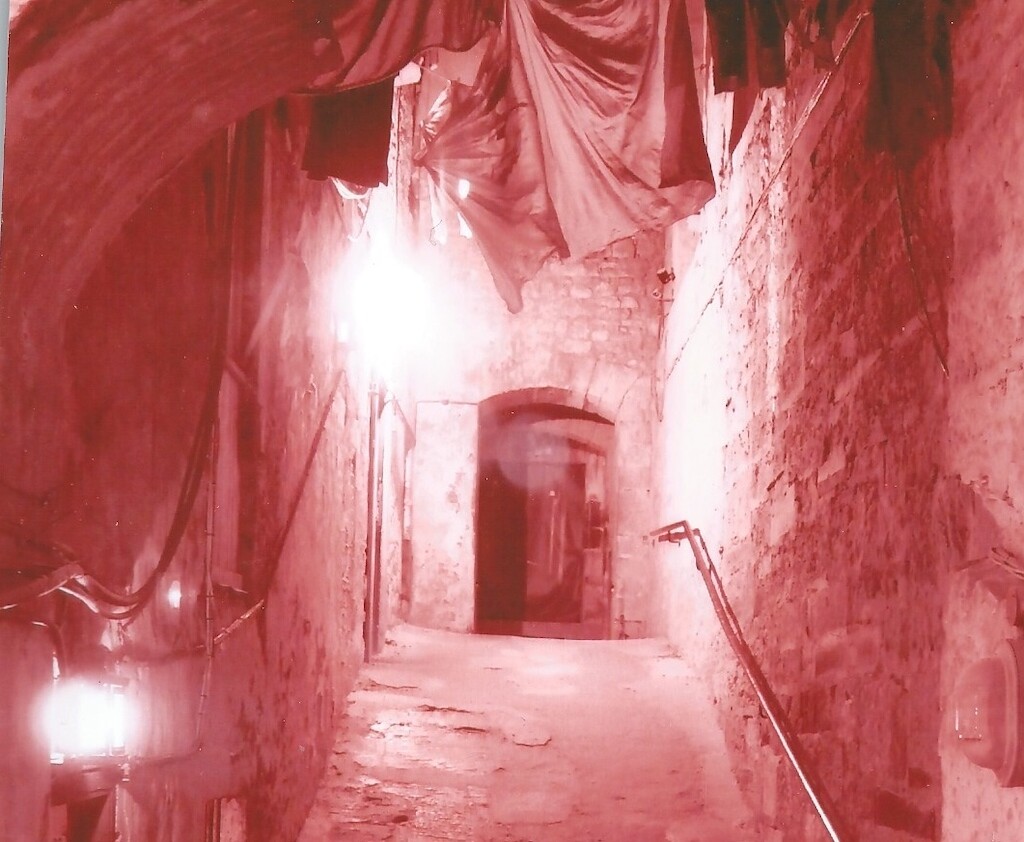Paris is fairly well known for its catacombs, but it is in no way the only metropolis that once featured life underground. Scotland’s pristine Edinburgh once had an unseemly history of residents living under bridges and streets. This is the history of Edinburgh Undergound.

Why They Built Underground
Edinburgh’s use of subterranean living is directly the result of the construction of the Flodden Wall in 1513. The Wall surrounded the city. This meant that new buildings had to be constructed either outside the Wall (which was not safe from attack) or necessitated the conversion of cellars and below-street storage rooms into housing within the actual city.
In the 1700s, Edinburgh began building a series of bridges. Because the bridges served as a crossing for roads and hills, and not rivers, there were dry open spaces beneath. These areas became prime real estate for cheap housing.
Entire “cities” formed under bridges in a honeycomb of sealed-off rooms that remained out of sight from the bridge where the wealthy tended to stroll about.
Cities Under Bridges
Originally, the rooms under the bridges were used to hold prisoners and undesirables. But eventually bridges such as the South Bridge became used for tradesmen as economical shops, albeit shops with no windows and narrow doors.
Robert Louis Stevenson described the places in his 1878 book Edinburgh: Picturesque Notes:
“…under dark arches and down dark stairs and alleys…the way is so narrow that you can lay a hand on either wall. (There are) skulking jail-birds; unkempt, barefoot children; (an) old man, when I saw him last, wore the coat in which he had played the gentleman three years before; and that was just what gave him so preeminent an air of wretchedness.”
Robert Louis Stevenson
Decrepid Conditions
During the 19th century, the population in the city swelled with survivors of the Irish famine who relocated to cities such as Edinburgh. Lacking money, they added to the crowds living below the city. A doctor of the time remarked that he found a family of four living in “a vault or cave under a large tenement…(and they sublet) their miserable and dark abodes to as many as can be crammed into them.”
As the 20th century dawned, fire, structural collapses, and housing built outside the Flodden Wall brought an end to the occupation of the labyrinth below Edinburgh. As the city erected new buildings and roads, many traces of the subterranean houses became paved over and destroyed. However, it was not forgotten.
Tales of the underground city became the stuff of legend. Many people consider these underground habitations and shops as haunted.
Related: Derinkuyu: The Tumultuous History of Turkey’s Underground City
Over time, the remains of this dark period in Edinburgh’s history occasionally revealed itself. In the 1970s, construction workers uncovered a substantial find. The archaic Marlin’s Wynd, which once held the stalls of fruit and book merchants, revealed itself virtually intact beneath the floors of the Royal Mile’s Tron Kirk.
Mary King’s Close at Edinburgh Underground
Additional traces of Edinburgh Underground have come to light. Arguably the most notorious being Mary King’s Close, a “street” buried beneath the City Chambers. Lore states that in the mid-1640s Close housed plague victims who were sealed up, but still alive, in an effort to prevent the spread of the illness.

Several companies in the city host tours (or ghost tours) of the remaining Edinburgh vaults and streets where countless people once lived—and died.
Sources:
“Life Beneath Edinburgh”, Celtic Heritage, Sept/Oct 2002.
“Edinburgh Vaults”, Historic UK website, pulled 6/14/16.